There’s no worse feeling for a rider than gearing up for a ride, turning the key, and… nothing. No roar of the engine, no purr from the exhaust, just silence or, at best, a few weak clicks. A motorcycle that refuses to start can turn an exciting day into a frustrating one, but before you start pushing it toward the nearest mechanic, take a deep breath. Most starting issues can be diagnosed and fixed with a little patience and the right approach.
At AliWheels, we live and breathe motorcycles. We know how important your bike is to you, and we’re here to help you troubleshoot and fix the problem yourself. This guide will walk you through a step-by-step process to identify what’s wrong and get your bike running again.
Start with the Basics: The Simple Stuff First
Before diving into complex repairs, take a moment to rule out the obvious. Sometimes, the reason your motorcycle won’t start is something small and easily overlooked.
First, check if the kill switch is engaged. It might sound too simple, but many riders forget that the kill switch was accidentally flipped. Make sure it’s set to “run.”
Next, look at the fuel valve (if your bike has one). Is it open? Many motorcycles have a petcock valve that controls fuel flow. If it’s in the “off” position, your engine won’t get fuel.
Now, check the neutral gear indicator. Some bikes won’t start unless they’re in neutral, even if you’re holding in the clutch. Look for the green neutral light on your dashboard to confirm.
Still nothing? Then it’s time to get hands-on with a full diagnosis.
Listen to What Your Bike is Telling You
Your motorcycle isn’t just refusing to start for no reason. It’s trying to tell you what’s wrong—you just need to pay attention to the symptoms.
- If you hear absolutely nothing when you press the start button, it’s likely an electrical issue.
- If you hear a rapid clicking sound, your battery might be weak or dead.
- If the engine cranks but won’t fire up, you may have a fuel or spark problem.
- If it starts but immediately stalls, it could be a fuel delivery or airflow issue.
Each of these points to a different problem, so let’s break it down further.
Battery & Electrical Problems: The First Culprit
A dead or weak battery is the most common reason why a motorcycle won’t start. If your headlights are dim, your horn sounds weak, or you hear a clicking noise when you hit the starter, your battery is likely the issue.
How to Check Your Battery
Turn on the key and try the headlights. Bright and strong? The battery might be fine. Dim or flickering? It’s weak.
To confirm, use a multimeter to check the battery voltage. A healthy battery should read 12.6V or higher when fully charged. If it’s below 12.2V, the battery needs charging or replacing.
If your battery is fine, check the fuses. A blown fuse can prevent the bike from starting. Locate the fuse box (usually under the seat), pull out the fuses one by one, and look for a broken wire inside.
Loose battery terminals can also cause issues. Make sure the connections are clean and tight. If you see white or greenish buildup around the terminals, that’s corrosion. Clean it with a wire brush or some baking soda mixed with water.
If the battery is good and the bike still won’t start, the problem lies elsewhere.
Fuel Problems: Is Your Bike Getting Gas?
If your engine cranks but won’t fire up, you might have a fuel delivery issue.
First, open your fuel tank and check if there’s gas inside. It sounds basic, but sometimes fuel gauges aren’t accurate, and riders assume they have gas when they don’t.
For fuel-injected bikes, listen for the fuel pump priming when you turn the key. You should hear a faint buzzing noise for a second or two. If you don’t, your fuel pump might have failed.
If your bike has carburetors, old gas could have clogged them up. If your bike has been sitting for weeks or months, the fuel might have evaporated, leaving behind residue that clogs the jets. Open the carburetor drain screw and see if fuel flows out. If nothing comes out, the carb is likely gummed up and needs cleaning.
If the bike starts when you spray a little starter fluid into the intake, that confirms a fuel issue. You may need to clean or replace the fuel filter or check for kinks in the fuel lines.
Spark Plug & Ignition Issues
If your motorcycle has power and fuel but still won’t start, the problem could be a lack of spark. A faulty ignition system won’t ignite the fuel-air mixture, leaving you stranded.
Checking for Spark
- Remove one of your spark plugs.
- Reconnect it to the ignition coil and hold the metal part of the plug against the engine.
- Crank the engine while watching for a blue spark at the tip.
If you don’t see a spark, or it’s weak and orange, your ignition system needs attention.
Dirty or fouled spark plugs are often the problem. If your plugs are black and sooty, they’re covered in excess fuel. If they’re wet, your engine might be flooded. Dry and white? Your engine could be running too hot.
If new plugs don’t fix the problem, your ignition coil, stator, or CDI unit could be faulty. These parts control the spark, and if they fail, your bike won’t run.
Airflow & Compression: The Last Resort
If you’ve got power, fuel, and spark but your bike still won’t start, the issue could be with airflow or engine compression.
Start by checking the air filter. A dirty or clogged filter can suffocate the engine, preventing it from getting the air it needs to burn fuel. Remove it and see if the bike starts without it. If it does, replace the filter.
If airflow isn’t the issue, it’s time for a compression test. If your piston rings or valves are worn out, your engine won’t be able to generate enough pressure to run. A mechanic can test this for you, but if your bike has been losing power lately, this could be a sign of low compression.
When to Call a Mechanic
If you’ve checked everything—battery, fuel, spark, and airflow—and your motorcycle still won’t start, it’s time for professional help. Some deeper electrical or mechanical problems require specialized tools and expertise.
A failing stator or ECU issue can be difficult to diagnose without testing equipment. Similarly, if your engine is seized or has suffered internal damage, trying to start it repeatedly could make things worse.
Final Thoughts: Get Back on the Road
There’s nothing worse than a motorcycle that won’t start, but with a methodical approach, you can usually track down the issue. Whether it’s a dead battery, a clogged fuel system, bad spark plugs, or an airflow restriction, most problems can be fixed with a little effort.
At AliWheels, we know how much you love your bike. That’s why we provide high-quality motorcycle batteries, spark plugs, fuel system cleaners, and other essential parts to keep your machine running strong.
Don’t let a no-start situation ruin your ride. Follow these troubleshooting steps, get your hands dirty, and get back on the road where you belong. Because nothing beats the feeling of the open road and the wind in your face. Ride safe!










